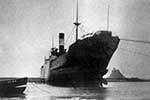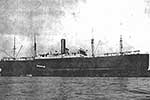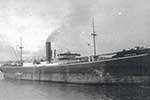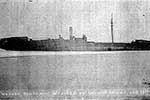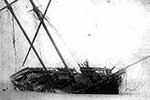Holy Island Shipwrecks
"well - just some of our local shipwrecks"
The Farne Island Group is located about 10 miles south-east of Berwick-upon-Tweed.
The islands represent the culmination of a layer of whinsill rock extending from across the country from Cumbria. For every visible island there are a host of underlying rocky outcrops. They are reckoned to be some of the most dangerous waters around the British Isles rendered even more dangerous as they are enroute for all shipping navigating the northeast coastline and the tidal currents are both tricky and tremendous.
It is fitting, therefore, that one of our lighthouses The Longstone (of Grace Darling fame) houses the brightest light in Europe. Additionally, there are many unusual structures around our coastline which act as beacons through which navigation of the complex passages is effected.
The number of wrecks is legion and ranges from Spanish boats in centuries past - supplying their Scottish ally, during the period of terrible war between Scotland and England and who, in the confusion of their passage through the islands, were carrion to the English naval squadron lying in wait at Holy Island - right through to modern times. The fast, changing currents racing around the rocky bottom disturb the naturally occuring coal slurry renders visibility almost zero in places. Diving and recovery is consequentially dangerous even for the most experienced and in any event many of the wrecks are soon brocken up and dispersed.
Lindisfarne<, the largest of the Farnes, has a traditional association with the sea with a nautical history which traces back well over 1300 years. In years gone by two lifeboats operated from the island manned by the heroic ancestors of our present day fishermen.
Todays' lifeboats are based at Berwick-upon-Tweed and Seahouses. There are many who still feel that there remains a need for one based on the island - filling in a potentially missing gap in coastline security and providing a more immediate (and economical) response for the occasional visitors who become stranded on the island's causeway.
